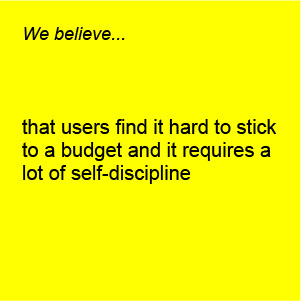How we went through the steps from assumptions to form UX design recommendations for our given product brief
Map assumptions → Form hypotheses → Quantitative research → Qualitative research → Form insights → Define principles → Articulate recommendations
I am currently enrolled in a 32 week UX Upskill course at Hyper Island (HI). After our introduction module, where we learned methodology related to team work we dove into our first UX module: Field Work. Four weeks with online seminars, workshops and self-study, led by senior digital product designer Julia Bouverat. This article aims to provide a glimpse into the process and my reflections and learnings along the way.
The Brief
How might we create a bank or a financial planning product that delivers financial wellness?
We used Figjam as our collaborative whiteboard throughout the process and started mapping our assumptions. We were provided with a user persona for the brief — a young professional who was interested in learning more about personal finance and how to manage their money.
Mapping Assumptions
We identified our assumptions during our first workshop.
I thought this was a good way to start things off as it allowed us to get off the starting blocks faster. It also highlighted to us that not only do we have to map our assumptions about our users’ needs, but also about what a final product would be and its potential business benefits.
Assumptions I plotted about user needs included:
– a desire for financial empowerment through learning and economic literacy
– a sense of trust in your bank and that they have your best interest at heart
– the wish to feel in control of their monthly budget
– being able to feel assured that occasionally splashing out a little will not ruin your monthly budget
Hypotheses
We then molded these user needs into hypotheses, shaping the direction of the research to follow.
Here I hit a bit of a stumbling block. How specific should I be? Should I really believe in the hypothesis 100 per cent? Being a fictional project for educational purposes the project were missing the context, constraints and expectations a real project would have. Perhaps this made the task more challenging? Embracing the Hyper Island spirit of experimentation, I dove in, acknowledging that my actions, successful or not, would at least be valuable learning opportunities.





I composed my hypotheses knowing that they were perhaps a little obvious and simplistic but my thinking was that they then would be easier to prove or disprove.
Quantitative Research
We created a screener survey, including quantitative questions to gather data. I personally encountered difficulty in pinpointing the necessary data needed at this stage. My preference would be to use the screener survey solely for filtering the best candidates for the research and do a quantitative survey after the interviews, but I do see the value of collecting data at the opportunities available and making the survey even more productive.


Additionally, I planned a card sorting exercise to take place at the end of each interview, where users could rate nine feature ideas.
Qualitative Research
To keep focused (and also worrying about taking the interviewees valuable time) I kept the interviews at a 20 to 30 minutes’ duration. When preparing notes and quotes from the interviews afterwards I wished I took more time to go more in depth on some of the questions, and ask the interviewees to elaborate more. A good lesson for next time.
Insights
Crafting insights from the interviews was a little challenging at first because the interviews brought up issues that I hadn’t foreseen when planning the research. However, the insights could serve as proof of the initial hypotheses to varying degrees. My thinking here is that it might have helped to analyse the first interview thoroughly first, before proceeding to the next, learning from the “mistakes” of the previous interviews as I go along. I would then see where I would want the interviewees to elaborate.
Mental Models
Going through my interview notes it dawned on me that each individual has their own mental model of what a budget should be and how they should spend their money. When developing a budgeting app I believe this would be an interesting avenue to explore.



Principles
Based on the insights, we formulated principles that act as guidance for the recommended next steps. I defined the principles as avoiding specialist financial jargon, facilitating financial education, building trust, minimising efforts involved in staying on budget and promoting rewards.
Recommendations
Arriving at the final stage, we formed our recommendations for next steps of the project. Whilst workshops can be held in the areas of building trust and education, such as, How might we: facilitate learning, reduce efforts of keeping a budget, ensure users we want them to succeed and build trust. Mapping users’ mental models of budgeting would help reveal opportunities that can help managing spending.
Some reflections in hindsight
Starting with hypotheses is a helpful way to establish a starting point and eliminate potential biases that might taint the research further down the process. However, the insights might differ significantly from the initial hypotheses and bring up new angles of the topic we had not considered at the start.
As this was a fictional project for educational purposes, it brings with it a list of unknowns (constraints and expectations) by default, which ironically can complicate the research stage.
I would love to get the chance to do similar research in a professional setting, applying skills I gained through this project— and create new ones.


